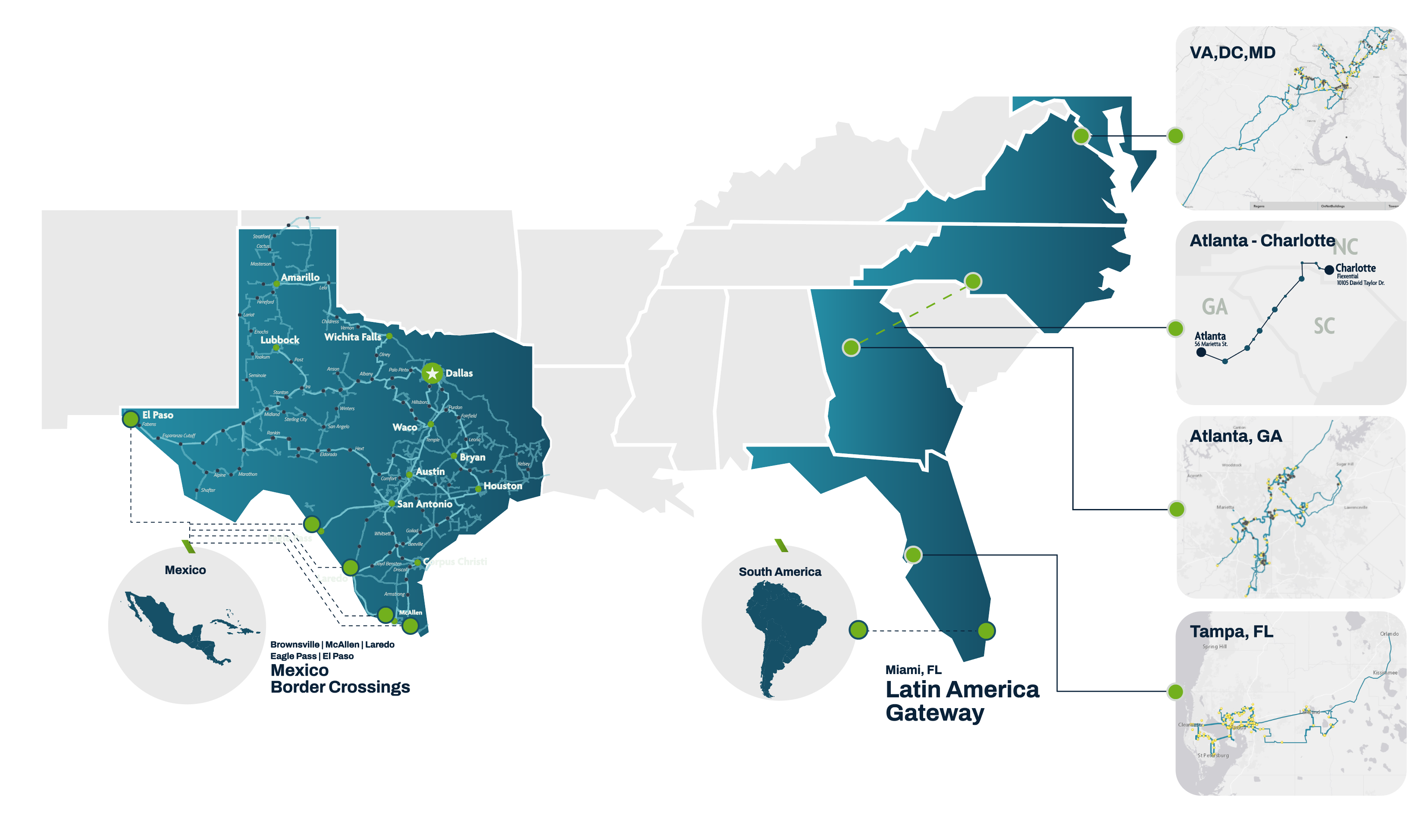
Bill Major, CEO, stepped into FiberLight at a pivotal moment, when the company was acquired in April 2023. He and his team have worked to reshape its trajectory, growing it from 170 to 229 employees and executing strategic network expansions.
“2024 exceeded my expectations,” Major said. “From a KPI metric standpoint, a performance standpoint, we dramatically overachieved on top-line and bottom-line revenue.” He acknowledged that while FiberLight had to adapt its go-to-market strategy quickly, the team responded with agility, enabling his team to execute at a high level.
As the company expanded, Major made leadership changes to “reimagine the company.” He brought in Shane Ward as CFO, formerly with Lumos, and Chuck Girt as CTO, a longtime colleague, to “harden our network” and improve transparency in customer experiences.
FiberLight’s network footprint is also rapidly expanding, with 1,000+ miles of fiber currently being engineered, permitted, or constructed. Major is looking ahead, confident that by 2025-2026, the company’s network will grow well beyond its 20,000 miles.
Part of this growth strategy includes leveraging our constructed and owned fiber. “We are removing other providers’ fiber where we’ve now overbuilt,” he explained. “With our expanding network, I want to have as close to 100% control of the fiber assets we actually own and operate.” This move is about ensuring long-term control and efficiency in network maintenance and cost management.
AI-Driven Infrastructure Demand

He compared today’s AI-driven infrastructure buildout to the early days of the internet boom decades ago. “We’re in the infancy of AI,” he said. “These are just language learning models right now. We’re not even seeing AI’s full potential yet.” He remains confident that demand for high-capacity fiber connections will only continue to grow as AI infrastructure scales.
FiberLight is already designing and considering new long-haul routes, including those connecting Chicago to Dallas and Chicago to Ashburn, key corridors for hyperscale connectivity.
M&A & Industry Consolidation
When speaking with Inside Towers in April 2024, Major anticipated a wave of mergers and acquisitions across the fiber industry. “I’ve been calling this out for a year and a half—this 18-24 month horizon was going to be a frothy period for M&A. That’s an understatement,” he said.
In Texas alone, he’s reviewed four potential acquisitions in the past month, underscoring the rapid pace of deal-making, indicating an announcement may be in the not-so-distant future.
While consolidation is happening across the industry—Conterra selling off New Mexico assets, Everstream exiting St. Louis, and Cox divesting network assets—Major is taking a selective approach to acquisitions. “FiberLight is in a unique position to be very selective on which assets will be accretive to our vision and growth strategy,” he explained.
It’s All About BEAD, Or Is It?
With billions of dollars in Broadband Equity, Access, and Deployment (BEAD) funding flowing into the market, Major acknowledged its impact but clarified that FiberLight did not apply directly for funding. Instead, the company is well-positioned to partner with last-mile fiber-to-the-home (FTTH) providers who received the funds.
“Anybody that takes that money and thinks they’re going to construct 300 new miles of fiber at today’s costs is kidding themselves,” he said. Instead of overbuilding networks, many providers will look to lease or buy from existing middle-mile operators like FiberLight.
Beyond BEAD, state broadband grants are also shaping the industry. “We’ve already partnered up and have been awarded as an underlying provider to enable fiber-to-the-home recipients,” Major added, signaling that FiberLight is playing a key role in these projects without directly taking on the risks of BEAD-funded builds.
Joint Ventures and Strategic Partnerships
Beyond acquisitions, FiberLight is exploring joint ventures (JVs) and partnerships as another avenue for growth. “I see JVs as a unique opportunity, particularly for larger regional providers,” Major said.
Many of these companies have aging private equity sponsorships and high debt loads, making traditional acquisitions difficult. A JV structure could allow investors to reduce risk while maintaining long-term upside.
Nothing is off the table, he emphasized. “I’m constantly talking to my sponsors, my board, and other providers about strategic opportunities.”
Not FiberLight’s First or Last Rodeo
Looking forward, Major wants to move past the perception that FiberLight is tied to Texas. As demand for fiber grows south of Dallas and along key east coast corridors like Atlanta to Ashburn, FiberLight is crossing borders, literally, designing new routes and continuing its aggressive expansion strategy.
For Major, FiberLight’s trajectory is not just about near-term growth, it’s about leaving a lasting impact. “This is my legacy,” he said. “When I finally leave the telecom space, I’m going to leave an amazing company. One that lasts for the next 10 to 20+ years.”
For more information about FiberLight visit https://www.fiberlight.com/.





Reader Interactions